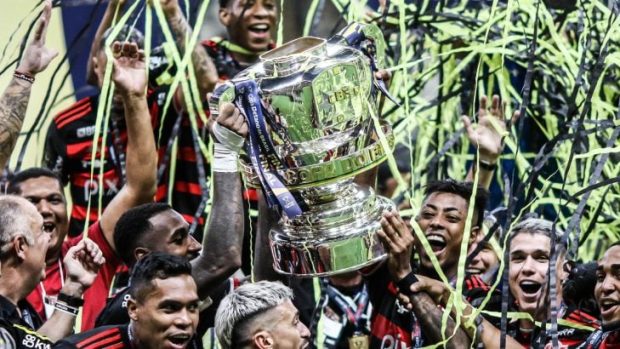Roman Anthony, baseball’s No. 1 prospect, is officially a big leaguer.
After two months of speculation, fan base frustration and Triple-A moon shots, the Red Sox called up the 21-year-old outfielder on Monday. Anthony, born on May 13, 2004, is now the youngest player in The Show, taking that title away from fellow 2004 baby and Brewers outfielder Jackson Chourio.
Advertisement
Through his first two games, Anthony has already offered a tantalizing glimpse of what made him such a highly touted prospect. That includes blistering a ball at 111.2 mph, which signaled that from a skill standpoint, Anthony is ready to compete at the highest level.
Why is he a big the biggest deal?
Anthony is MLB’s top prospect because his offensive ceiling is stratospheric.
Drafted 79th overall in 2022 but given a signing bonus commensurate with a late-first-round slot, Anthony was well-known as a high schooler, but he wasn’t a “can’t-miss” prospect. Evaluators worried that the young Floridian might be something of a tweener — an outfielder who doesn’t hit enough to start in a corner but doesn’t have an elite glove in center field. Think Hunter Renfroe, Will Benson, late-career Jason Heyward or the current scuffling version of Brandon Marsh.
But upon entering pro ball, Anthony shed the tweener label almost immediately. His power potential, contact ability and swing decisions were all well beyond expectations. He shined in 2023, carving up High-A pitchers despite being 3.3 years younger than the average player. And the real breakout came a year later, when Anthony slashed .291/.396/.498 between Double-A and Triple-A. That propelled him to the top of prospect lists this past winter, with nearly every public prognosticator having the Boston basher slotted in at No. 2 behind the older and more professionally established Roki Sasaki.
Advertisement
Anthony is by no means a butcher in the grass or a plodder on the bases; he remains passable in center field and recorded an 82nd percentile run time in his MLB debut. But the value here is tied up in the bat, which has a chance to be special. He’s a supreme in-box athlete, with a wonderful combination of looseness and power. That juice comes more from his arms, wrists and hands than from his lower half, but Anthony’s far from pushy. He’s able to generate amazing pop without selling out completely.
And the numbers back up the eye test.
Just last week, while still a member of the Worcester Red Sox, Anthony launched a 497-foot grand slam, the longest home run in pro baseball this year. Earlier in the season, he smoked one 116 mph, something that only 19 players have done in the bigs this season. Through his first two MLB games, Anthony’s tracked bat speed already ranks in the 87th percentile, alongside guys such as Elly De La Cruz, Bryce Harper and Bobby Witt Jr.
What type of player could he become?
The ceiling is somewhere around Kyle Tucker or peak Christian Yelich. Both of those players were active on the bases, something Anthony has been during his time in the minors.
Advertisement
Like Yelich, Anthony occasionally struggles to lift the baseball. In Triple-A this year, he posted a 52.2% ground ball rate, a mark that would be eighth-highest among qualified MLB hitters this year (Yelich, at 58.3%, ranks first). There are a number of successful players in this range — Fernando Tatis Jr., Elly De La Cruz, Jacob Wilson, James Wood and Gunnar Henderson are all over 50% — but bashing the ball into the turf so often gives Anthony a much smaller margin for error. Thankfully, Anthony, like that group, hits the ball hard enough to have success while running such a high ground ball rate.
If Anthony hits the ground running — no pun intended — it might look a lot like Detroit’s Riley Greene. If it takes a bit more time for his average to stabilize and the contact ability to show, it could be more along the lines of Yankees outfielder Jasson Dominguez. If Anthony fills out more than expected, loses a step or two and doesn’t hit for as much average as is anticipated, Jay Bruce or the older version Brandon Nimmo might be reasonable comparisons.
One last note about Anthony’s offensive profile: He rarely swings. His swing rate the past three seasons has hovered between 35% and 38%, an incredibly low figure that would place him in MLB’s bottom five. The only player with a lower swing rate than the 35.6% Anthony posted in Triple-A this year? Juan Soto.
How does he fit on the current Red Sox roster?
That it took so long for Boston to call upon its top prospect says more about the state of the team’s big-league roster than it does about Anthony. The Sox entered the season with all three outfield positions spoken for: Jarren Duran in left, Ceddanne Rafaela in center, Wilyer Abreu in right. An oblique issue for Abreu was the catalyst for Anthony’s promotion.
Advertisement
How Anthony fits in once Abreu, who is also a left-handed-swinging right fielder, returns from the IL depends on a number of factors. How long will Abreu be sidelined? How does Anthony look in his absence? Do the Red Sox move Rafaela to the infield and send scuffling rookie second baseman Kristian Campbell to Triple-A for a refresh? Does another club construct an appealing trade package for Rafaela or Duran, opening a spot in the grass?
The immediate future for Boston’s much maligned defensive alignment remains murky and complicated. But with Anthony in the fold, the long-run dreaming begins to feel more tangible.
This news was originally published on this post .








Be the first to leave a comment